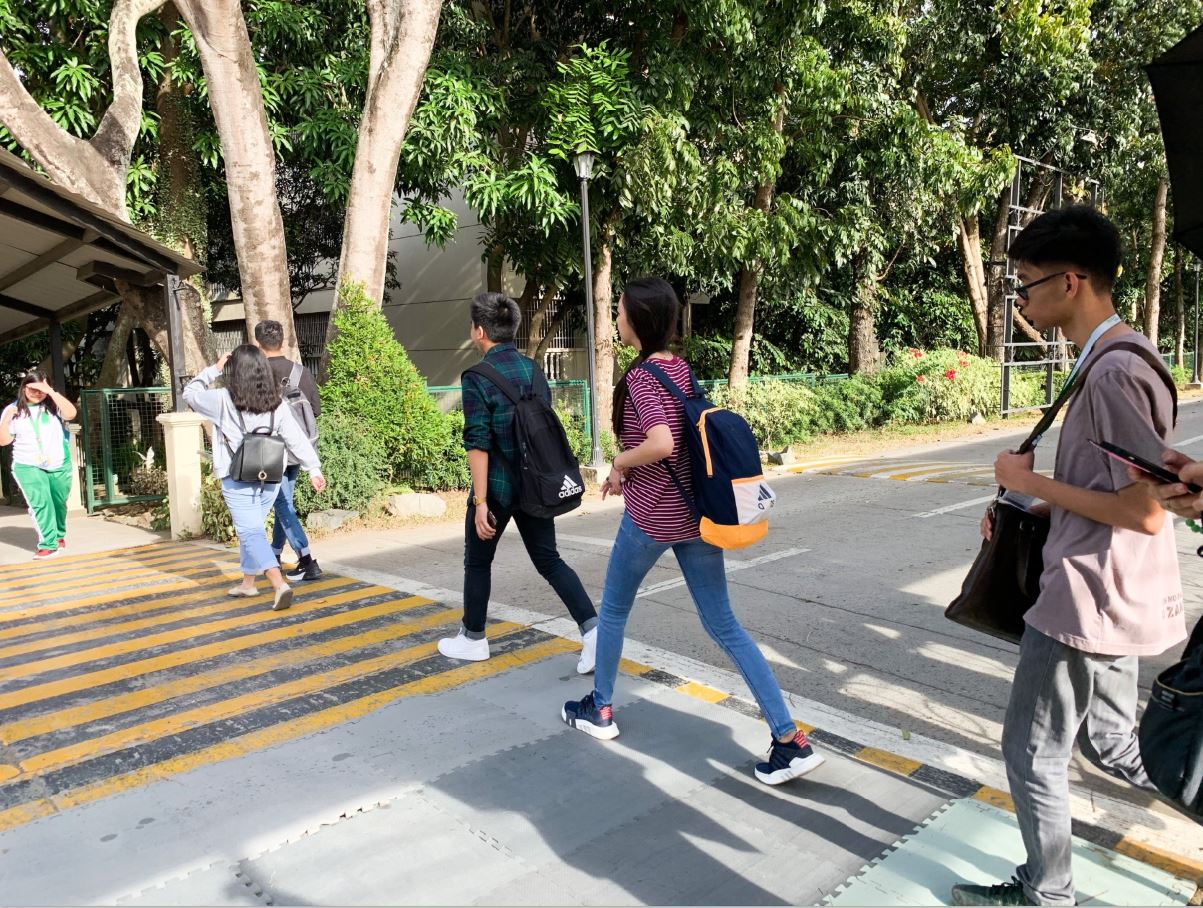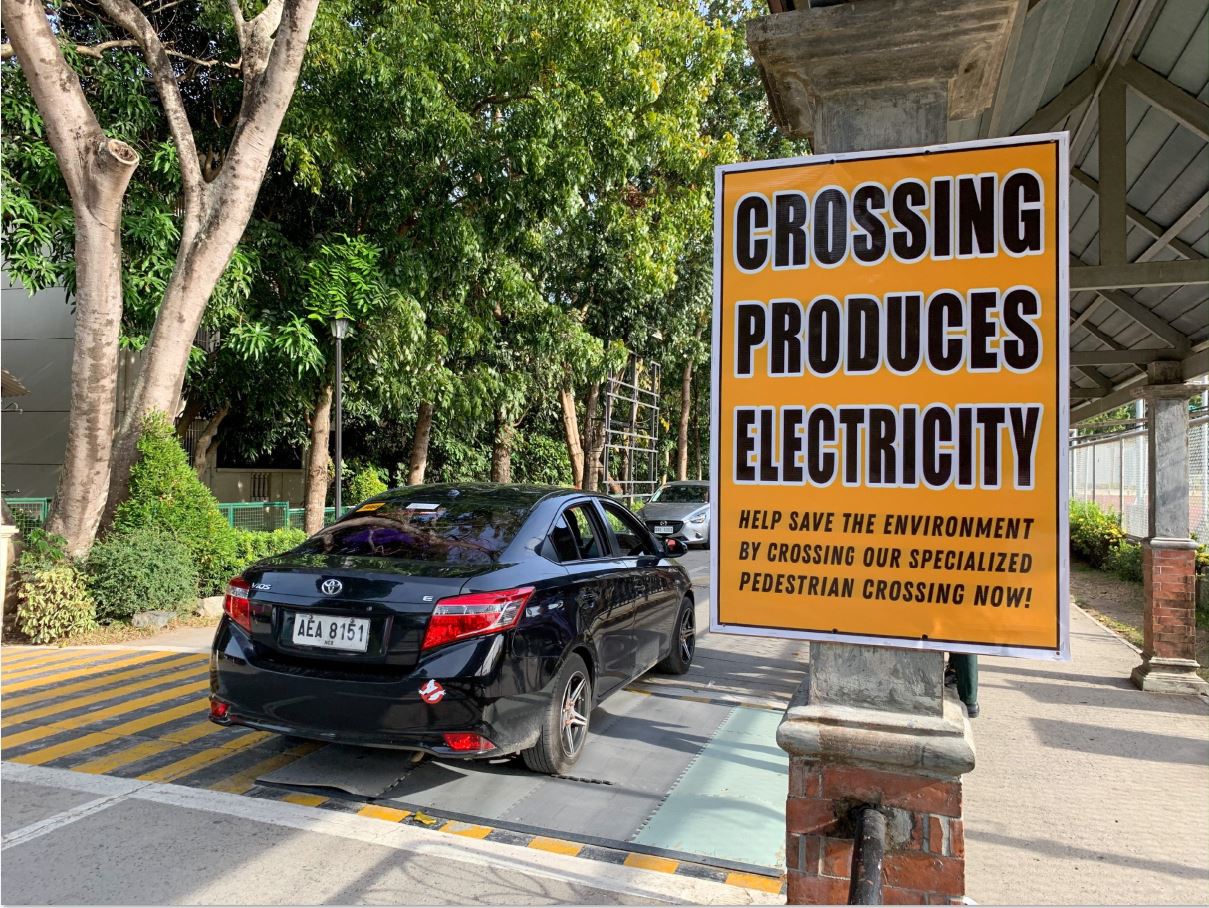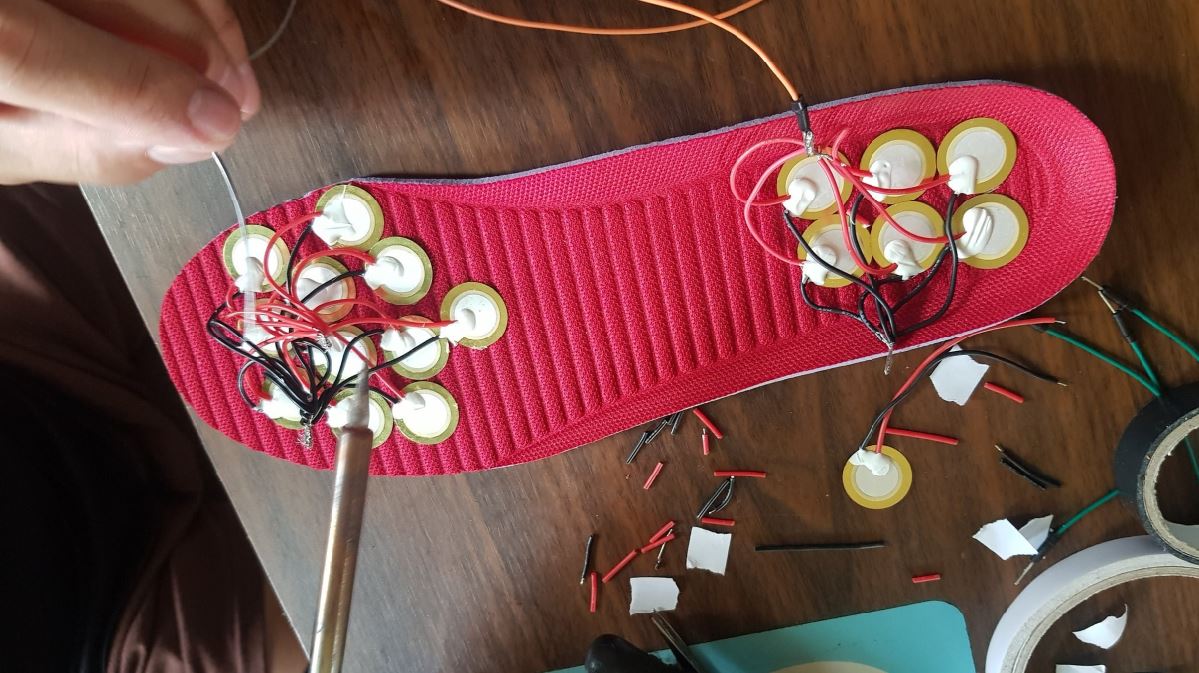
De La Salle University-Dasmariñas Senior High School (DLSU-D SHS) students have developed electricity-generating pedestrian crossing and shoes as their ecology-friendly school projects.
The two research projects use Piezoelectric, also known as pressure electricity technology, to create energy from mechanical pressure.
Piezing

In February 2020, the Piezoelectric Pedestrian Crossing or Piezing Project team placed rubber mats embedded with Piezoelectric technology along the pedestrian lane in front of the DLSU-D HS Complex.
Underneath the mats is the contraption created by the SHS students that generate electricity from pressure (wheel weight and feet weight).
The Piezoelectric Pedestrian Crossing or Piezing Project description says it aims to determine the change in behavior of pedestrians when crossing the street and to create a crosswalk that can produce sustainable electrical energy when force is applied unto the device.
“Not all people are aware of what piezoelectricity is. We want people to know that this device could be the next alternative source for electrical energy. With just a step, you yourself could create electrical energy,” said Piezing Project member, Lyconia Manea A. Leynes.
“We want to start a change as young adults, by following a simple rule of crossing the streets properly,” adds Charlyn Angela B. Cheng.
The research has already recorded a generation of energy after it installed the mats on the DLSU-D HS pedestrian crossing and has been removed after enough data was gathered to show a positive generation of electricity.
Piezing Project group members include Leynes and Cheng, Julianne Marie N. Alicdan, Angela Nicole P. Hernandez, Denisse Gwen R. Oli, Danielle Mari C. Tanael, Eliyah Jane A. Tuazon, and Rafael Angeleo Miguel M. Villamor, with Rex Reignier P. Seña and Mark Freud M. Bolima as research advisers.
Piezoelectric Shoe

The piezoelectric shoe adds to the piezing mat innovation by harnessing the energy exerted by the pedestrians themselves, whether they are using the crossing or just simply walking elsewhere.
It is designed as a portable charger whose energy will be equal to the number of steps the user takes.
This DLSU-D SHS piezoelectric shoe claims its uniqueness in that it utilizes a complementary digital step-counter to track the user’s steps.
The improved piezoelectric shoe features the addition of a mobile application to track the user’s steps and energy output.
“The energy exerted by people not walking over those mats just gets wasted so, why not get the energy directly from people’s feet?” explained research team member, Kenneth D. Borlado.
“It has been my dream to develop a renewable energy source capable of converting wasted energy into electrical energy to charge small devices such as a phone anytime at anywhere,” adds Matthew Ivan E. Rosaro.
The Piezoelectric Shoe research proponents include Borlado and Rosaro along with Joshua Luigi C. Delos Santos, Hans Francis M.Lugo, Gabriele Andrei Z. Samson, with Ivan James Fermanejo as a research adviser.
DLSU-D HS Vice Principal Marlon Pareja told Good News Pilipinas that the two research projects are part of the institution-supported school projects through the St Benilde Student Research Grant program that funds student researches.
“Sustainability is one of the themes the school supports,” shares Pareja.
“We need to challenge our students to create innovative solutions to present-day problems. The mere fact that present-day problems still exist means the old ways that we are doing are not any more effective.
“By making our students realise that a lot of ‘out of the box’ approaches can be made, (this) hastens their creativity as learners,” adds Pareja.
Pareja adds he will highly recommend that DLSU-D adopts the research recommendations.
The students’ research data are to be presented at the DLSU-D High Research Conference scheduled for April 29-30.
DLSU-D HS had earlier made news headlines after Good News Pilipinas featured Marlon Pareja’s own team research discovery on the potential of squid ink in determining water pollution.
Another DLSU-D SHS research project, that also earned the attention of national media after being featured on this site, showed students developing an alternative to plastic straw using banana peels.
SEND CONGRATULATIONS in the comments below to La Salle Dasmariñas High School students for developing electricity-generating pedestrian crossing and shoes!
Want to know how to be a Proud Pinoy? Like, Follow, Subscribe to GoodNewsPilipinas.com and our socials Facebook, Twitter, Instagram, Good News Pilipinas! TV on YouTube, for new story notifications and e-mail newsletters for updates on more Filipino Pride stories.










